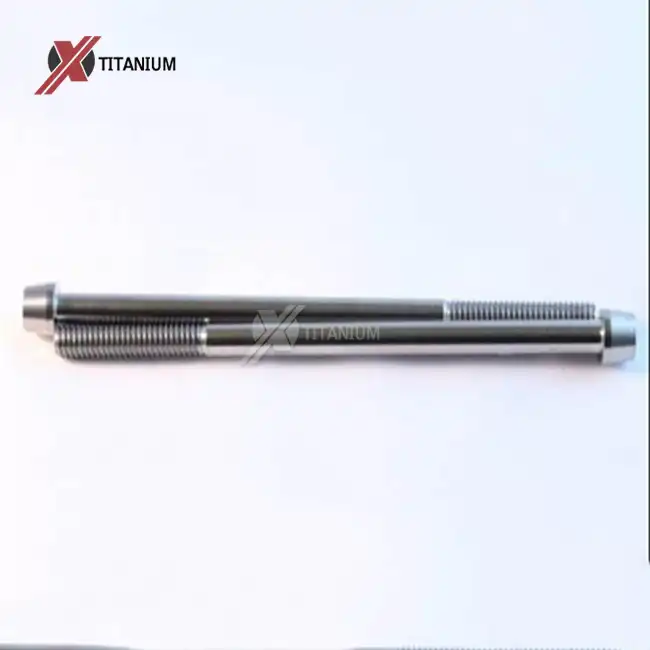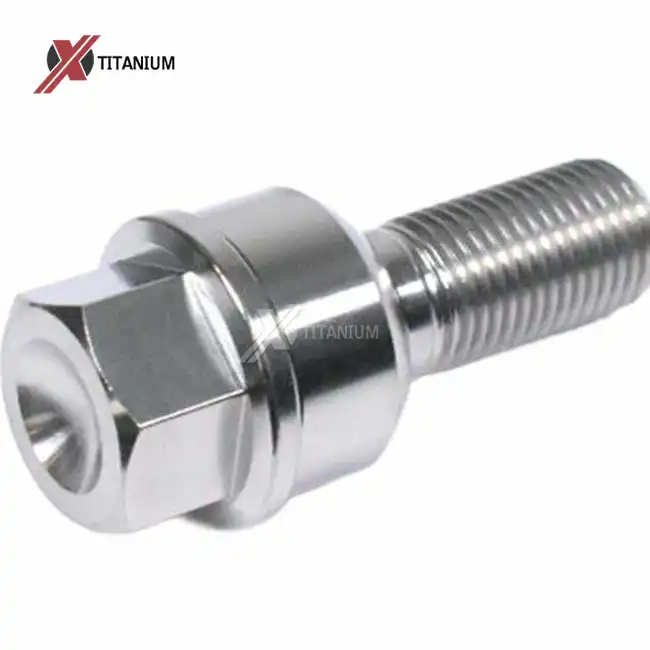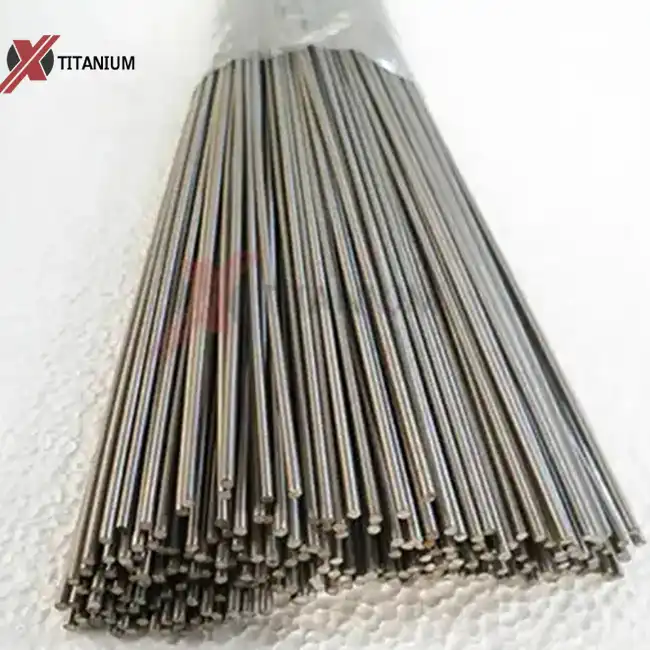Surface Treatment Techniques for Pure Titanium Wire
Mechanical Surface Treatments
Mechanical surface treatments are crucial in modifying the topography of pure titanium wire, enhancing its biocompatibility. Sandblasting, a popular technique, involves propelling abrasive particles at high velocity against the wire surface. This process creates micro-roughness, increasing the surface area for cell attachment. The roughened surface promotes osteoblast adhesion and proliferation, leading to improved osseointegration in medical implants.
Another effective mechanical treatment is machining. This process can create specific surface patterns or textures on the titanium wire. These patterns can guide cell growth and alignment, which is particularly beneficial for applications in tissue engineering. The controlled surface topography can influence cell behavior, promoting desired biological responses.
Polishing, while reducing surface roughness, plays a vital role in certain biomedical applications. A smooth surface can be advantageous in applications where bacterial adhesion needs to be minimized, such as in dental implants. Polished pure titanium wire surfaces exhibit lower bacterial colonization rates, reducing the risk of implant-associated infections.
Chemical Surface Treatments
Chemical surface treatments alter the surface chemistry of pure titanium wire, significantly impacting its biocompatibility. Acid etching, using solutions such as hydrochloric acid or sulfuric acid, removes the native oxide layer and creates a new surface topography. This treatment enhances osteoblast adhesion and increases the rate of osseointegration, making it valuable for orthopedic and dental implants.
Alkali treatment, typically using sodium hydroxide, creates a bioactive sodium titanate layer on the surface. This layer promotes the formation of a bone-like apatite when exposed to body fluids, enhancing the wire's bonding with bone tissue. The increased bioactivity results in faster and stronger implant integration.
Hydrogen peroxide treatment is another effective chemical method. It creates a titanium peroxy gel layer on the surface, which increases hydrophilicity and promotes protein adsorption. This treatment enhances cell attachment and spread, improving the overall biocompatibility of the titanium wire.
Electrochemical Surface Treatments
Electrochemical treatments offer precise control over the surface properties of pure titanium wire. Anodization, a widely used technique, creates a controlled oxide layer on the titanium surface. By varying the anodization parameters, such as voltage and electrolyte composition, the thickness and structure of the oxide layer can be tailored. This oxide layer not only enhances corrosion resistance but also improves biocompatibility by promoting cell adhesion and differentiation.
Plasma electrolytic oxidation (PEO) is an advanced electrochemical treatment that creates a highly porous oxide layer. This layer exhibits excellent wear resistance and biocompatibility. The porous structure allows for better integration with surrounding tissues and can be used to incorporate bioactive elements, further enhancing the wire's biological performance.
Electrochemical etching is another valuable technique. It can create nanoscale surface features that mimic the natural extracellular matrix. These nanostructures significantly influence cell behavior, promoting better cell adhesion, proliferation, and differentiation. This treatment is particularly beneficial for applications requiring rapid tissue integration.
Impact of Surface Treatments on Biocompatibility
Cell Adhesion and Proliferation
Surface treatments profoundly influence cell adhesion and proliferation on pure titanium wire. Roughened surfaces, created by techniques like sandblasting or acid etching, provide more contact points for cells to attach. This increased surface area enhances protein adsorption, a crucial step in cell adhesion. Studies have shown that osteoblasts, the cells responsible for bone formation, prefer moderately rough surfaces over smooth ones.
The surface energy, altered by various treatments, also plays a vital role in cell behavior. Hydrophilic surfaces, often achieved through chemical treatments or plasma modification, demonstrate improved wettability. This enhanced wettability facilitates the spread of cell culture medium, promoting uniform cell distribution and better overall cell attachment.
Moreover, certain surface treatments can create specific surface chemistries that mimic the extracellular matrix. For instance, hydroxyapatite coatings applied to pure titanium wire not only improve osseointegration but also enhance the proliferation of bone-forming cells. This biomimetic approach significantly boosts the wire's biocompatibility in bone-related applications.
Protein Adsorption and Biofilm Formation
The interaction between pure titanium wire surfaces and proteins is a critical factor in biocompatibility. Surface treatments can significantly alter the protein adsorption characteristics of the wire. For example, increased surface roughness typically leads to higher protein adsorption. This can be beneficial in promoting cell adhesion but may also increase the risk of bacterial colonization.
Chemical treatments, such as alkali treatment, can create a negatively charged surface that attracts specific proteins beneficial for cell adhesion while repelling others. This selective protein adsorption can be leveraged to enhance biocompatibility for specific applications. For instance, in cardiovascular implants, surfaces that preferentially adsorb albumin over fibrinogen can reduce the risk of thrombosis.
Biofilm formation, a significant concern in medical implants, is also influenced by surface treatments. While rougher surfaces may promote initial bacterial adhesion, certain treatments can imbue the surface with antibacterial properties. For example, silver ion implantation or the incorporation of antibacterial agents during anodization can create surfaces that resist bacterial colonization, thereby reducing the risk of implant-associated infections.
Osseointegration and Tissue Response
Osseointegration, the direct structural and functional connection between living bone and the surface of an implant, is crucial for the success of many medical devices using pure titanium wire. Surface treatments play a pivotal role in enhancing this process. Techniques like sandblasting and acid etching create micro-roughness that mimics the natural bone surface, promoting better bone cell adhesion and differentiation.
The creation of a bioactive surface through treatments like alkali and heat treatment or hydroxyapatite coating significantly accelerates the osseointegration process. These treatments induce the formation of a bone-like apatite layer on the titanium surface when exposed to physiological fluids, creating a strong bond between the implant and surrounding bone tissue.
Furthermore, surface treatments can modulate the inflammatory response to implanted titanium wire. Certain surface modifications, such as those that increase hydrophilicity, have been shown to reduce the initial inflammatory response. This moderation of inflammation can lead to faster healing and better long-term integration of the implant with the surrounding tissues.
Future Trends in Surface Treatment for Biocompatibility
Nanotechnology and Smart Surfaces
The future of surface treatments for pure titanium wire lies in nanotechnology and smart surfaces. Nanostructured surfaces, created through advanced techniques like electrospinning or lithography, can mimic the nanoscale features of natural tissues. These surfaces offer unprecedented control over cell behavior, potentially guiding tissue regeneration with greater precision.
Smart surfaces that can respond to environmental stimuli are another exciting frontier. For instance, surfaces that can change their properties in response to pH or temperature could offer dynamic control over cell adhesion and drug release. This could lead to implants that adapt to the body's changing needs over time, significantly enhancing long-term biocompatibility.
The integration of bioactive molecules directly into the surface treatment process is also gaining traction. Techniques like biomimetic mineralization allow for the incorporation of growth factors or other bioactive agents directly into the surface layer of titanium wire. This approach could create implants that actively promote tissue regeneration and healing.
Combination Treatments and Synergistic Effects
The future of surface treatments for pure titanium wire is likely to involve combining multiple techniques to achieve synergistic effects. For example, combining mechanical roughening with chemical treatments and bioactive coatings could create surfaces that optimize both initial cell adhesion and long-term tissue integration.
Hybrid surfaces that combine organic and inorganic components are also showing promise. These surfaces could offer the mechanical strength of titanium with the biological activity of natural tissues. For instance, titanium surfaces modified with cell-derived extracellular matrix components have shown enhanced osteogenic differentiation of stem cells.
The development of gradient surfaces, where properties change gradually across the surface, is another area of interest. These surfaces could guide cell behavior in specific directions or create implants with different properties in different regions, tailored to the needs of complex anatomical sites.
Personalized Surface Treatments
As medicine moves towards personalization, surface treatments for pure titanium wire are likely to follow suit. Advanced manufacturing techniques like 3D printing could allow for the creation of implants with patient-specific surface topographies. These could be designed based on individual patient data to optimize integration with their specific bone structure or tissue type.
The incorporation of patient-derived biological factors into surface treatments is another exciting possibility. Techniques that allow for the binding of autologous growth factors or stem cells to the implant surface could dramatically improve biocompatibility and reduce the risk of rejection.
Furthermore, the development of real-time monitoring and adaptive surface treatments could revolutionize implant technology. Imagine surfaces that can change their properties in response to the healing process or detect and respond to early signs of infection. While still in the realm of research, such technologies could significantly enhance the long-term success of titanium implants.
Conclusion
Surface treatments profoundly influence the biocompatibility of pure titanium wire, offering a versatile toolkit for enhancing its performance in medical applications. From mechanical treatments that alter surface topography to chemical and electrochemical processes that modify surface chemistry, each technique uniquely impacts cell adhesion, proliferation, and tissue integration. The future of titanium surface treatments lies in nanotechnology, smart surfaces, and personalized approaches, promising even greater control over biocompatibility. As research continues to unveil new possibilities, the potential for titanium wire in medical implants and devices continues to expand, offering hope for improved patient outcomes and revolutionary medical technologies.
At Baoji Chuanglian New Metal Material Co., Ltd., we are at the forefront of titanium product manufacturing and innovation. As a trusted pure titanium wire supplier, we are committed to delivering high-quality solutions that meet the evolving needs of industries worldwide. Our pure titanium wire is produced to the highest quality standards, incorporating cutting-edge surface treatments to meet diverse biomedical needs. Whether you're looking for standard titanium wire or custom solutions with specific surface treatments, our team of experts is ready to assist you. Contact us at info@cltifastener.com or djy6580@aliyun.com to discuss how our titanium products can enhance your medical devices and implants.
FAQ
What are the most common surface treatments for pure titanium wire?
Common surface treatments include sandblasting, acid etching, anodization, and plasma spraying. Each treatment offers unique benefits for biocompatibility.
How does surface roughness affect cell adhesion?
Increased surface roughness generally promotes better cell adhesion by providing more contact points for cells and increasing protein adsorption.
Can surface treatments improve the antibacterial properties of titanium wire?
Yes, certain treatments like silver ion implantation or incorporation of antibacterial agents during anodization can enhance the antibacterial properties of titanium surfaces.
What is the role of hydroxyapatite coating in improving biocompatibility?
Hydroxyapatite coating mimics natural bone mineral, enhancing osseointegration and promoting bone cell growth on the titanium surface.
References
1. Liu, X., Chu, P. K., & Ding, C. (2004). Surface modification of titanium, titanium alloys, and related materials for biomedical applications. Materials Science and Engineering: R: Reports, 47(3-4), 49-121.
2. Elias, C. N., Oshida, Y., Lima, J. H., & Muller, C. A. (2008). Relationship between surface properties (roughness, wettability and morphology) of titanium and dental implant removal torque. Journal of the Mechanical Behavior of Biomedical Materials, 1(3), 234-242.
3. Wennerberg, A., & Albrektsson, T. (2009). Effects of titanium surface topography on bone integration: a systematic review. Clinical Oral Implants Research, 20, 172-184.
4. Variola, F., Brunski, J. B., Orsini, G., Tambasco de Oliveira, P., Wazen, R., & Nanci, A. (2011). Nanoscale surface modifications of medically relevant metals: state-of-the art and perspectives. Nanoscale, 3(2), 335-353.
5. Yin, C., Zhang, Y., Cai, Q., Li, B., Yang, H., Wang, H., & Qi, H. (2013). Effects of the micro-nano surface topography of titanium alloy on the biological responses of osteoblast. Journal of Biomedical Materials Research Part A, 101(10), 2925-2938.




